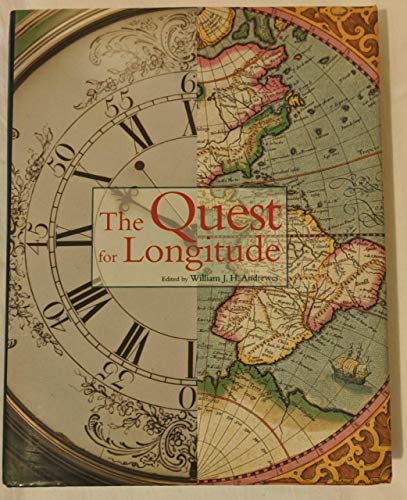Synopsis
The Quest for Longitude is a book for students and for teachers, for collectors and for scholars, and for the thousands of people who, having enjoyed Sobel's Longitude, desire a well-illustrated reference that describes in detail the many fascinating devices and the intriguing characters who, by solving the ancient problem of finding longitude at sea, changed the world forever. 250 illustrations, 120 in color.
Reviews
Any armchair navigator or scientist who was captivated by Dava Sobel's bestselling but brief 1995 book, Longitude, can wallow at length in the subject with this comprehensive volume based on a 1993 symposium (which was also the origin of Sobel's book). The historical, scientific, and technological aspects of what editor Andrewes (curator of Harvard's Collection of Historical Scientific Instruments) calls ``the longitude problem'' are examined in detail. Attractively designed, this large volume is lavishly illustrated in both color and black-and-white. -- Copyright ©1996, Kirkus Associates, LP. All rights reserved.
This book is based on the proceedings of a longitude symposium held in November 1993 at Harvard University. It is an oversize book that is lavishly illustrated with black-and-white and color photographs. Leading scholars cover all aspects of the subject: they begin by discussing longitude in the context of mathematics, navigation, cartography, and the history of science; move on to early efforts at finding longitude (from observing the eclipses of Jupiter's satellites to the lunar-distance method of measuring it); then to John Harrison ("the timekeeper that won the longitude prize"); and on to developments and controversies in the field; then close with "watchmaking in the twenty-first century." In spite of different contributors authoring the text, the work traces the history of finding longitude seamlessly. And though the approach may not be as popular as that of Dava Sobel's Longitude (1995), it certainly will hold the attention of interested readers. Leon Wagner
After 1492, a key component of global dominance by the major seafaring European nations was the knowledge of latitude/longitude, whether on land or sea. Means of establishing latitude were developed, but methods for determining longitude (the measurement of lunar distances or eclipses on Jupiter's satellites) remained imperfect. A third method using "marine timekeepers," or chronometers, was the object of a competitive struggle eventually won by clockmaker John Harrison. These papers by 20 leading scholars and experts, presented at a 1993 conference, capture in their excellent writing and well-researched history the people and the technological demands involved in the creation of these unique clocks, where an error in seconds puts one miles off course. Also covered is the interplay of science, politics, and economics. The 260 illustrations are beautifuly reproduced; many have never been published before. Required for history of science and horology collections. [Dava Sobel covered this same symposium for Harvard Magazine and later wrote the best-selling Longitude, LJ 9/15/95.?Ed.]?Michael D. Cramer, Raleigh, N.C.
-?Michael D. Cramer, Raleigh, N.C.
Copyright 1996 Reed Business Information, Inc.
"About this title" may belong to another edition of this title.
